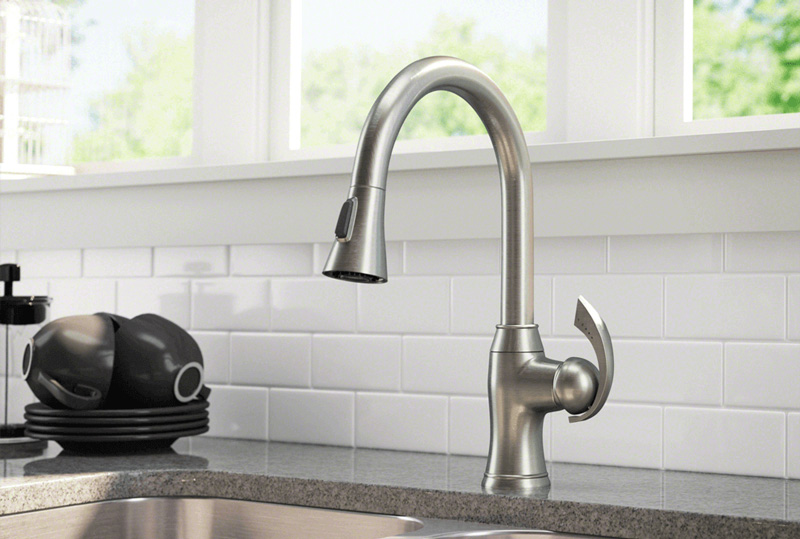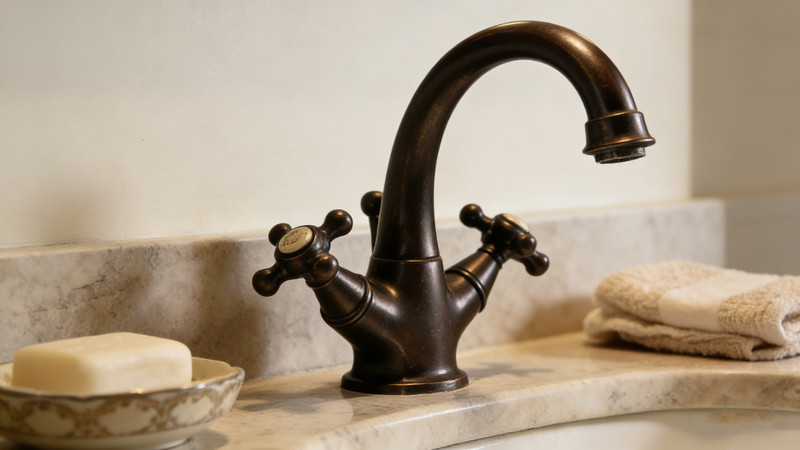How to Fix A Peeling Brushed Nickel Faucet – Step by Step

Brushed nickel fixtures are always popular by homeowners. However, this type of finish tends to peel off after a while and doesn’t look as beautiful as before. So why do brushed nickel fixtures wear off? How to fix a peeling brushed nickel faucet? This post aims to teach you how to restore a peeling brushed nickel faucet effectively.
Why brushed nickel faucet peel off
Insufficient surface activation
Activation refers to the removal of oxide layers present on most metal surfaces. Proper surface preparation prior to plating will remove oxides, as well as any residual salt, soap, alkali or acid residues in the cleaning product that may inhibit coating adhesion.
Excessive coating thickness
Some electroplaters mistakenly believe that a thicker coating will provide better protection for the substrate. However, coatings that are too thick can become brittle and eventually start to “flaky” when hit during assembly or when they collide with heavy objects during transport.
Current Interruption During Electroplating
Current interruption or broken electrical contacts during electroplating can cause peeling and other adhesion problems. If the power supply is interrupted or turned off for an extended period of time, it is recommended to restart the plating process.
Low Bath Temperature
Proper bath temperature must be maintained during electroplating. When using larger plating baths, it is often necessary to agitate the plating bath to avoid segregation and maintain a consistent temperature.
High levels of bath contaminants: Baths with high levels of contaminants such as iron and trivalents can result in poor adhesion, usually manifested as flaking or flaking.
How to fix a peeling brushed nickel faucet
Materials needed before starting:
- cotton gloves
- soft cloth
- mineral spirits
- toothpicks
- chalk powder
- alcohol
- wax
Step 1. Put on cotton gloves before handling the peeling brushed nickel faucet. This will protect the metal from grease from your fingers. Always wear gloves when handling metal to prevent corrosion unless the bronze has been waxed to help protect it.
Step 2. Wipe the surface dust off the brushed nickel with a soft cloth. Brushed nickel needs to be dust-free before the finish can be restored.
Step 3. Rub mineral spirits on the brushed nickel to remove any grease from its surface. Wipe with a soft cloth in circular motions over the entire surface. Wrap a toothpick around a small piece of cloth to gain access to any crevices. Dry the surface.
Step 4. Mix together chalk powder and denatured alcohol to form a thick paste. Scoop some of the paste onto a clean cloth and rub it onto the bronze surface. This polishes metal surfaces and removes minor corrosion, such as that from finger oil. Use a buffing motion to rub the paste onto the bronze. You may need to use a variety of applications, depending on how much brushed nickel peels off.
Step 5. Wipe off any remaining paste and dry the metal thoroughly with a clean cloth. Wipe the tough metal wax onto the surface with a soft cloth. Waxes help freeze the bronze’s surface and help prevent it from oxidizing in the future.
Tips on maintain brushed nickel faucet
- Cleaners containing abrasives, harsh chemicals, alcohol, or other organic solvents can damage and corrode nickel-plated faucets. Splashes of toothpaste, acne medicine and mouthwash. These often contain ingredients like baking soda, peroxide, sodium fluoride, or phosphate, which can damage faucet finishes when they come in contact with metal for extended periods of time.
- Using a mild dishwashing detergent, wash the nickel faucets using a soft cloth and water. For tougher dirt, soak the affected area for a few minutes before cleaning. Use circular movements to avoid smudging.
- Brushed nickel faucets need cleaning at least twice a week. It is important to get between every crevice while cleaning. This will prevent a calcium and heavy-dirt buildup.
- Once the cleaning and drying process is completed, take a sheet of wax paper and rub it on the nickel faucets. This method is known to give extra shine to brushed nickel faucets.
 WOWOW Faucets
WOWOW Faucets





